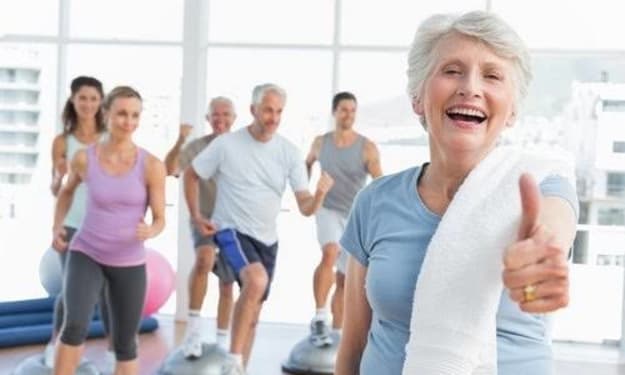HOW TO IMPROVE OUR JOINT HEALTH?
How to improve your joints Improve joint health and keep them in good shape with some tweaks to your lifestyle. Diet, exercise, and the right tools can improve your joint health. By becoming proactive in improving your joint health today, you may add years on to your joints longevity and comfort.

What Are Joints?
A joint is a connection between two bones. Joints and their surrounding structures allow you to bend your elbows and knees, move your hips, bend your back, turn your head, and wave your fingers. Smooth tissue called cartilage and synovium, along with a lubricant called synovial fluid, cushion the joints to prevent bones from rubbing together. However, aging, injury, or being overweight can wear away your cartilage, leading to damaged joints and arthritis. To care for your joints, it's essential to keep them, along with your muscles, ligaments, and bones, strong and stable. Here are some tips to help protect your joints and maintain their health for years to come.
Maintain a Healthy Weight
IF YOU NEED HOINT HEALTH IMROVING SUPPLEMENT ,CLICK HERE

Keeping your weight within a healthy range is the best thing you can do for your joints. Weight-bearing joints such as your knees, hips, and back support your body weight. Overweight individuals often experience problems with these areas because their joints are under added pressure from carrying the extra weight.
Stay Active
IF YOU NEED HOINT HEALTH IMROVING SUPPLEMENT ,CLICK HERE

Regular exercise helps your joints function properly, eases stiffness, and relieves fatigue. It strengthens the muscles that support your joints and reduces your risk of heart disease. Conversely, a sedentary lifestyle increases the risk of joint pain due to stiffness. Get up and move regularly, change positions frequently, and take breaks to stretch or go for short walks. Opt for low-impact exercises like swimming, stationary cycling, and lightweight lifting to minimize stress on your joints. Consult with your doctor or a physical therapist to design an appropriate exercise program.
Build Muscles
IF YOU NEED HOINT HEALTH IMROVING SUPPLEMENT ,CLICK HERE

Strong muscles support your joints, reducing the strain on them, especially in the spine, hips, and knees. Weight-training exercises help build muscle and keep your muscles and surrounding ligaments strong, ensuring that your joints don't bear the brunt of physical activity. A certified personal trainer can guide you on the best exercises for joint health and how to perform them correctly.
Strengthen Your Core
Incorporate activities that strengthen your core, including your glutes, back, abs, and obliques. Stronger core muscles help maintain balance and prevent falls that can damage your joints.
Stop Smoking
Reducing joint pain is another reason to quit smoking. Studies have shown that smokers are more likely to develop rheumatoid arthritis and other joint pains. Make it a priority to quit or at least reduce your smoking.
Perfect Your Posture
Good posture protects your joints from your neck to your knees. Standing and sitting up straight guards your hip joints and back muscles. Proper posture is also crucial when lifting and carrying. For instance, when using a backpack, wear it over both shoulders to avoid stressing your joints. When lifting, keep your back straight and feet wide apart, bending from your knees and hips, not your back. Use your legs and glutes to prevent straining smaller muscle groups.
Avoid Overusing Smaller Joints
Use your larger, stronger joints to spare the smaller, more fragile ones. For example, use an over-the-shoulder bag instead of a clutch, hold grocery bags with your arms or shoulder straps, and use both hands to open heavy doors. These practices reduce stress on your smaller joints.
Protect Your Body and Prevent Injuries
Always wear protective gear such as helmets, knee pads, and elbow and wrist pads during high-risk activities, including repetitive work-related tasks. Serious injuries or multiple minor injuries can damage cartilage and lead to long-term joint problems. Use braces or guards to reduce stress on your joints during activities.
Ice
Ice is an effective, drug-free pain reliever that helps reduce joint swelling. Apply ice wrapped in a towel or a cold pack to the painful area for no more than 20 minutes. If you don't have ice, a bag of frozen vegetables wrapped in a towel works well. Avoid applying ice directly to the skin.
Eat the Right Foods
A healthy diet reduces inflammation and helps build strong bones and muscles. Ensure you get enough protein from sources like lean meats, chicken, fish, beans, legumes, and nuts. Adequate intake of vitamin D and calcium is crucial for bone and joint health, helping to prevent osteoporosis. Most adults need 1,000-1,200 milligrams of calcium and 2,000 international units of vitamin D daily. Incorporate nutrient-rich foods like leafy greens, salmon, and sardines into your diet. Vitamin C and omega-3 fatty acids can also help reduce inflammation and support joint health.
Cut Out Foods That May Inflame Joints
Reduce or eliminate foods that cause inflammation, such as sugar, dairy, wheat/gluten, alcohol, and fried foods, to decrease swelling and inflammation.
Drink Plenty of Water
Staying hydrated ensures that your joints have enough synovial fluid to remain cushioned and mobile. Drink plenty of water to keep your joints in top condition.
By following these tips, you can keep your joints healthy and functional for a long, active life!
About the Creator
william jane
EXPERT FOR HEALTH & FITNESS
Enjoyed the story? Support the Creator.
Subscribe for free to receive all their stories in your feed. You could also pledge your support or give them a one-off tip, letting them know you appreciate their work.






Comments
There are no comments for this story
Be the first to respond and start the conversation.